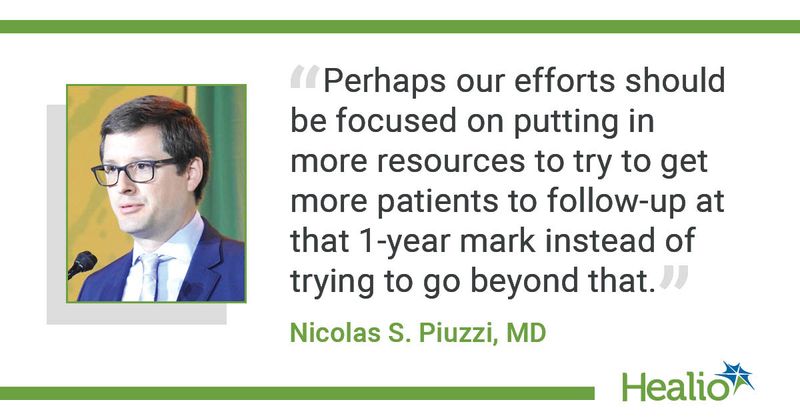Patient-reported outcome measures may stabilize 1 year after TJA
Key takeaways:
- Patient-reported outcomes stabilized 1 year after total joint arthroplasty.
- The clinical relevance ratio also began to decrease 1 year after total joint arthroplasty.
GRAPEVINE, Texas — Results presented here showed patient-reported outcome measures stabilized 1 year after total joint arthroplasty, while the clinical relevance ratio began to decrease.
“This current study continues to challenge the requirement to collect patient-reported outcomes beyond 1 year,” Nicholas S. Piuzzi, MD, of the Cleveland Clinic, said in his presentation at the American Association of Hip and Knee Surgeons Annual Meeting. “Perhaps our efforts should be focused on putting in more resources to try to get more patients to follow-up at that 1-year mark instead of trying to go beyond that.”

Piuzzi and colleagues retrospectively assessed patient-reported outcome measures in four studies on total knee arthroplasty and eight studies on total hip arthroplasty with a minimum 5-year follow-up.
“We used, as a measure of clinical significance, the [minimal clinically important difference] MCID that we used with a distribution-based threshold and we calculated a clinical relevance ratio,” Piuzzi said.
According to Piuzzi, patients who underwent either THA or TKA experienced improvements in patient-reported outcome measures within the first 6 to 12 months before stabilizing. After 1 year, Piuzzi said the clinical relevance ratio began to decrease for both THA and TKA.
“If we are looking at a registry, if we are looking at survivorship, that is where we should be investing our resources to try to collect that long-term follow-up for our patients,” Piuzzi said. “In the end, this is a matter of cost-effectiveness in research and orthopedic outcomes.”

